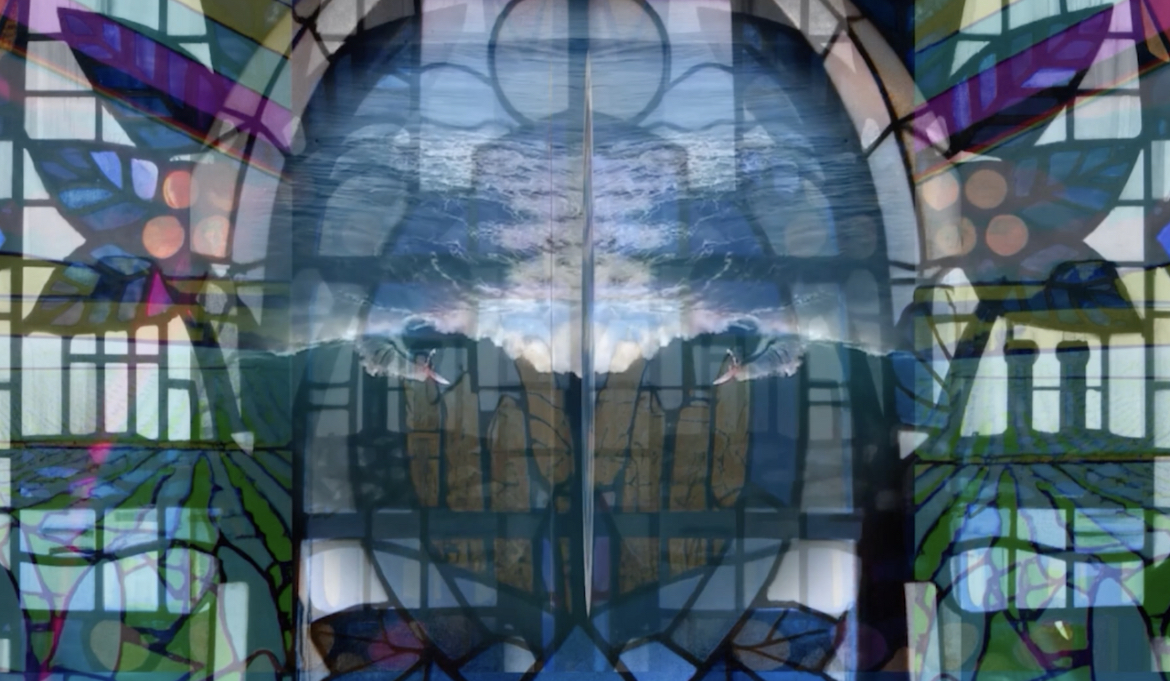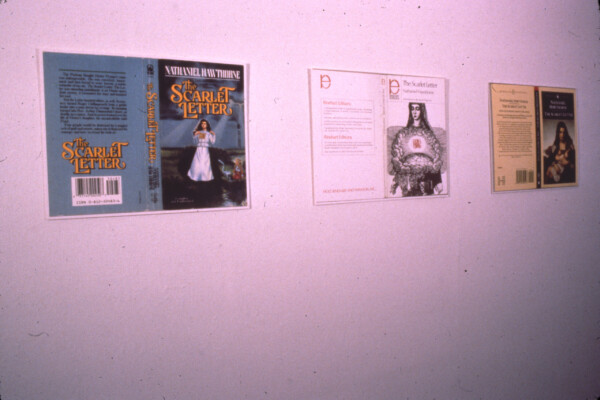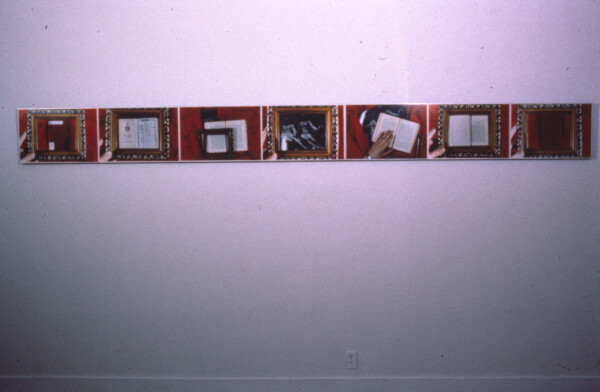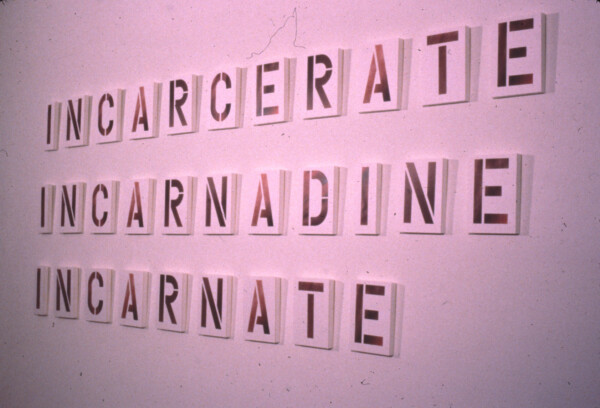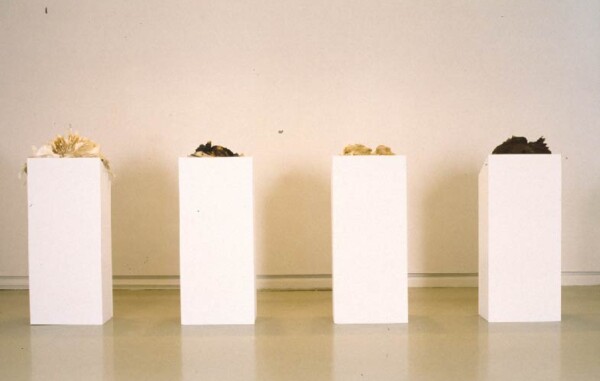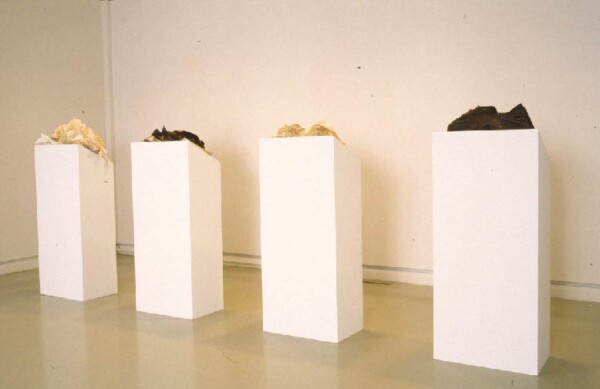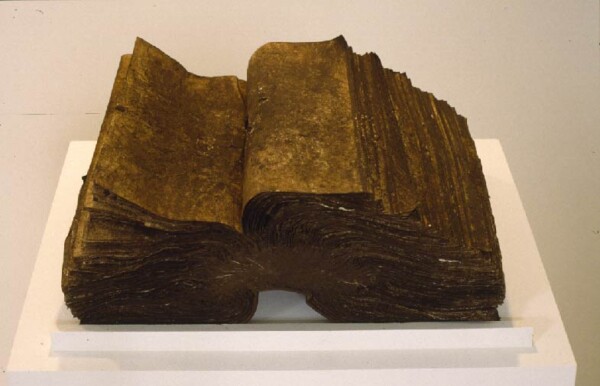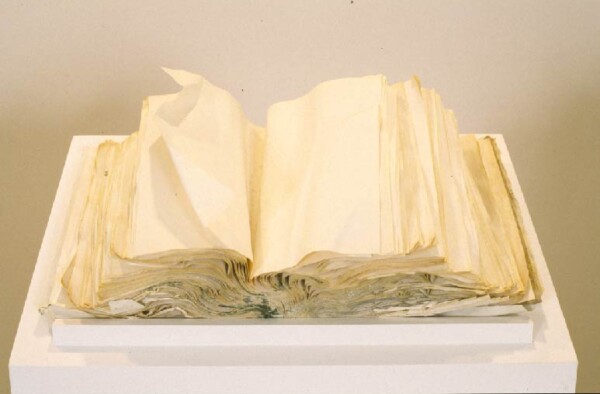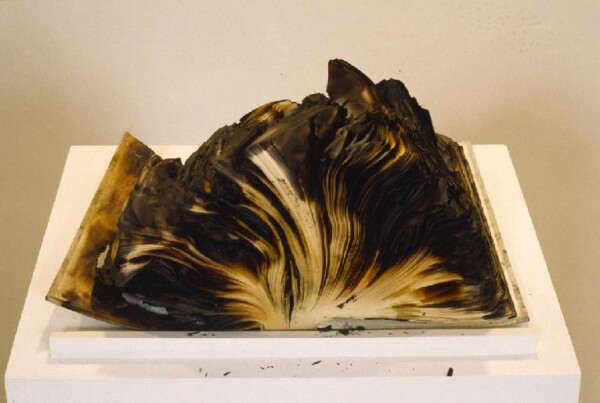- List –Julie Arnold
- List –Julie Arnold
- List –Julie Arnold
- List –Julie Arnold
List
Julie Arnold
9 February–
27 February 1993
Curated by: Susan Shuppli

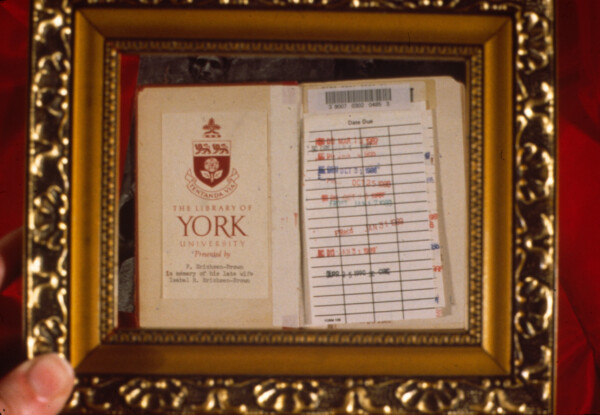
Julie Arnold: List, 1993. Courtesy of the artist.


Julie Arnold: List, 1993. Courtesy of the artist.


Julie Arnold: List, 1993. Courtesy of the artist.


Julie Arnold: List, 1993. Courtesy of the artist.


Julie Arnold: List, 1993. Courtesy of the artist.


Julie Arnold: List, 1993. Courtesy of the artist.


Julie Arnold: List, 1993. Courtesy of the artist.


Julie Arnold: List, 1993. Courtesy of the artist.


Julie Arnold: List, 1993. Courtesy of the artist.


Julie Arnold: List, 1993. Courtesy of the artist.
List
Julie Arnold
Curated by: Susan Shuppli
Julie Arnold: LIST
Or Gallery
February 9th to 27th, 1993
Visiting artist Julie Arnold has produced a site specific interactive installation entitled List. This project aims at developing a collaborative relationship between artist and gallery goer; whereby the viewer is encouraged to interact with or respond to some ideas presented by the artist. Because of the interactive nature of her installation, the artist will be present throughout the duration of her show.
Catalogue essay by Jeff Dickerson
In what economy does the unmarked white of paper become a utopian space? The institutional cube of the gallery, despite the attempts of conceptual art to find a way out via. an autocritique, remains frozen in the gaze of market forces-and artist-run centres, though not market driven, are not completely outside of these imperatives. Alternative, yet paradoxically parallel structures, artist-run centres function within their own bureaucratic and coded economy-codes that are not so seemingly blatant as the market, but codes that are perhaps equally institutionalized and centripetal.
LIST’s twenty-six scrolls of white paper, each crowned with a prompting word and hanging off of the gallery walls in a left-to-right alphabetical order, themselves act as uninscribed spaces beckoning a utopian gesture, a gesture that realizes the rigidity of the gallery economy at the same time that it is conditioned by it. Here, the gesture is scriptural: although there is no set of instructions for the viewer, the plinth piled with red, firecracker-sized pencils is enough of an indicator to the intentions of the work. The sociological nature of the list’s heads create an air of information gathering, as if the responses would be collated to profile a demographic group. Even in this “alternative” space some of the respondents worried about how the information would be used; this response shows how both public spaces and information (even anonymous information) is implicated with the state.
At the centre of LIST is an inquiry into the nature of viewer and (in this case) reader response: it sets out to see what will happen if intentionality is lifted from the act of reading. This strategy of the open work or text winds through Russian Formalism, structuralist semiotics, and Marxist poetics and lies in the variously politicized projects of modernist, postmodernist, and now, post-colonial ambiguity. This project has been read as an abdication of authorial intentionality and responsibility-a reactionary position that sees the “death of the author” not as the rise of the reader but as a loss of the ability of art and literature to speak to an imagined common humanity. Alternatively, the open work can be seen as a heterogeneous set of codes that allows the reader to be an active producer of the text’s meaning, thus breaking out of the commodity structure of the passive reader receiving an intact and stable set of codes that, even in its structure, do not challenge a dominant worldview. In these divided definitions there is a question of the effectiveness of the open work as a strategy-if viewed from a modernist perspective that invests in a stable and determinant meaning, the open work is a ploy perceived to mistakenly abandon meaning altogether. “As for the stimulus, it has to be ‘evocative’ more than ‘meaningful’: it must possess as little determinancy as possible, and therefore be open to, or better still, produce, such a plurality of associations that everyone may be able to find ‘something’ in it. It has, in other words, to centre on that keyword of Modernism-ambiguity.” While Franco Moretti, in Signs Taken as Wonders (p.242) is right to query the cultural relativism that insists that value is found in universality, he finds structural changes, or decisions, which create ambiguity, irony, and a different concept of the reader as not being “meaningful” and accuses that they “surrender history altogether.” Yet, the unquestioned terms remain meaning and history whose history is surrendered through the loss of what conception of meaning? Like Cartesian perspectival ism, this view does not interrogate its own colonizing gaze-rather it laments its passing and cautions of a breakdown of order.
LIST obviously surrenders meaning to its viewers-the intention of the work is not a quest for universalism, but an attempt to draw out specific responses within a context that changes the readers role from consumer to producer. Determinancy and the sites of meaning are scrutinized through a critical abdication of intentionality. Ironically, there remains the intention that something must be produced. What will be written on the scrolls will be a list of the relations of the gallery, the artist, and the viewer-the entangled contexts of meanings.
— Jeff Derksen
Jeff Derksen is a writer and editor living in the Mount Pleasant area of Vancouver.
List: Julie Arnold (850.22 KB)
Artist Bio
Julie Arnold
Julie Arnold is an artist and writer now living in Toronto. She studied English Literature and Visual Art at Simon Fraser University, and photography at Emily Carr College of Art and Design. In 1991 she received an MFA from York University.
